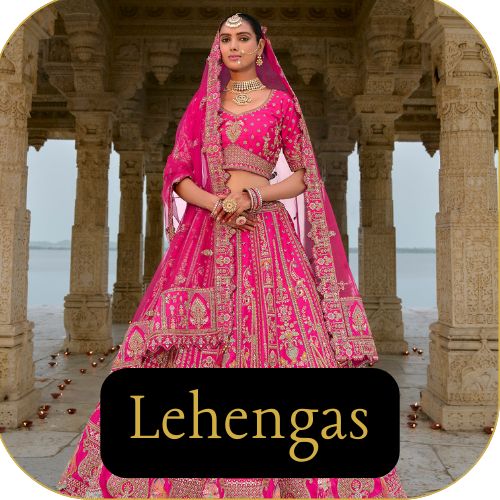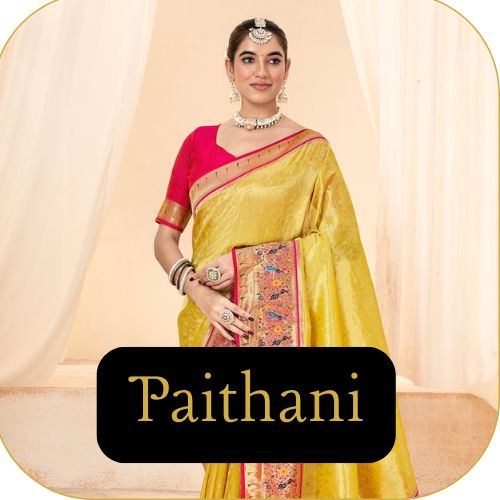History of Indian Sarees: Evolution Through the Ages
Indian sarees, with their timeless elegance and rich cultural heritage, have been an integral part of India's history and fashion for centuries. This quintessential garment, known for its versatility and grace, has evolved significantly over the ages. Let's embark on a fascinating journey through the history of Indian sarees and explore their evolution from ancient times to the present day.
Ancient Beginnings: The Birth of the Saree
The origins of the saree can be traced back to the Indus Valley Civilization, around 2800-1800 BCE. The word "saree" is derived from the Sanskrit word "sati," meaning a strip of cloth. During this period, both men and women draped long pieces of unstitched cloth around their bodies. Early depictions of the saree can be found in ancient sculptures, murals, and paintings, showcasing the simplicity and elegance of this garment.
Vedic Period (1500-500 BCE)
During the Vedic period, the saree evolved into a more structured form. Women wore a garment called "nivi," which was draped around the waist and pleated in the front. The upper body was often covered with a separate piece of cloth called "uttariya." The saree was usually made of cotton or silk and adorned with intricate patterns and borders, reflecting the wearer's social status and regional identity.
The Influence of Dynasties and Empires
Maurya and Gupta Empires (322 BCE - 550 CE)
The Maurya and Gupta empires marked a significant period in the evolution of the saree. The saree became more elaborate, with fine fabrics like silk and muslin being used. The Gupta period, often referred to as the Golden Age of India, saw the introduction of exquisite embroidery and decorative borders. Women began to experiment with various draping styles, highlighting the saree's versatility.
Mughal Era (1526-1857 CE)
The Mughal era brought about a fusion of Persian and Indian cultures, influencing the design and draping of sarees. The introduction of zari (gold thread) work, intricate embroidery, and luxurious fabrics like brocade and velvet became prominent. The Mughal influence is particularly evident in the Banarasi sarees, known for their opulent designs and intricate patterns.
Regional Diversity and Cultural Significance
South India
In South India, the saree has a rich tradition and cultural significance. The Kanjeevaram saree, originating from Tamil Nadu, is renowned for its vibrant colors, heavy silk fabric, and intricate zari work. Each region in South India, from Kerala's Kasavu saree to Karnataka's Ilkal saree, has its unique style and weaving techniques, reflecting the diversity of Indian sarees.
North India
North India boasts a variety of sarees, each with its distinct identity. The Banarasi saree from Varanasi is famous for its gold and silver brocade work, while the Bandhani saree from Gujarat and Rajasthan is known for its tie-dye patterns. The Phulkari saree from Punjab features vibrant embroidery, showcasing the region's rich artistic heritage.
East India
The sarees of East India are known for their simplicity and elegance. The Baluchari saree from West Bengal features intricate motifs depicting mythological scenes, while the Assam silk saree is renowned for its natural sheen and fine texture. Odisha's Sambalpuri saree, with its unique ikat patterns, is another example of the region's rich textile tradition.
West India
In West India, the Paithani saree from Maharashtra is a symbol of luxury and tradition. Made of fine silk, these sarees are characterized by their vibrant colors and intricate zari borders. The Bandhani saree, popular in Gujarat and Rajasthan, is known for its vibrant tie-dye patterns and lightweight fabric, making it ideal for the hot climate.
Modern Adaptations and Global Influence
The 20th Century and Beyond
The 20th century witnessed a significant transformation in the way sarees were perceived and worn. The freedom movement in India saw women adopting khadi sarees, symbolizing self-reliance and resistance against British rule. Post-independence, the saree continued to evolve, with designers experimenting with new fabrics, patterns, and draping styles.
Contemporary Trends
Today, the saree has transcended cultural boundaries and gained global recognition. Designers have reimagined the traditional saree, blending modern aesthetics with traditional craftsmanship. Contemporary sarees feature innovative fabrics, unconventional draping styles, and fusion elements, appealing to a diverse audience worldwide.
Celebrities and the Saree
The saree has found a special place in the hearts of celebrities, both in India and abroad. Bollywood actresses like Rekha, Sridevi, and Deepika Padukone have popularized the saree on international platforms, making it a symbol of elegance and sophistication. International celebrities like Oprah Winfrey and Naomi Campbell have also embraced the saree, showcasing its global appeal.
The history of Indian sarees is a testament to the rich cultural heritage and artistic excellence of India. From its ancient origins to its modern adaptations, the saree has evolved while retaining its timeless charm and cultural significance. As we celebrate this iconic garment, we honor the craftsmanship, diversity, and elegance that make the Indian saree a true symbol of tradition and fashion.
















